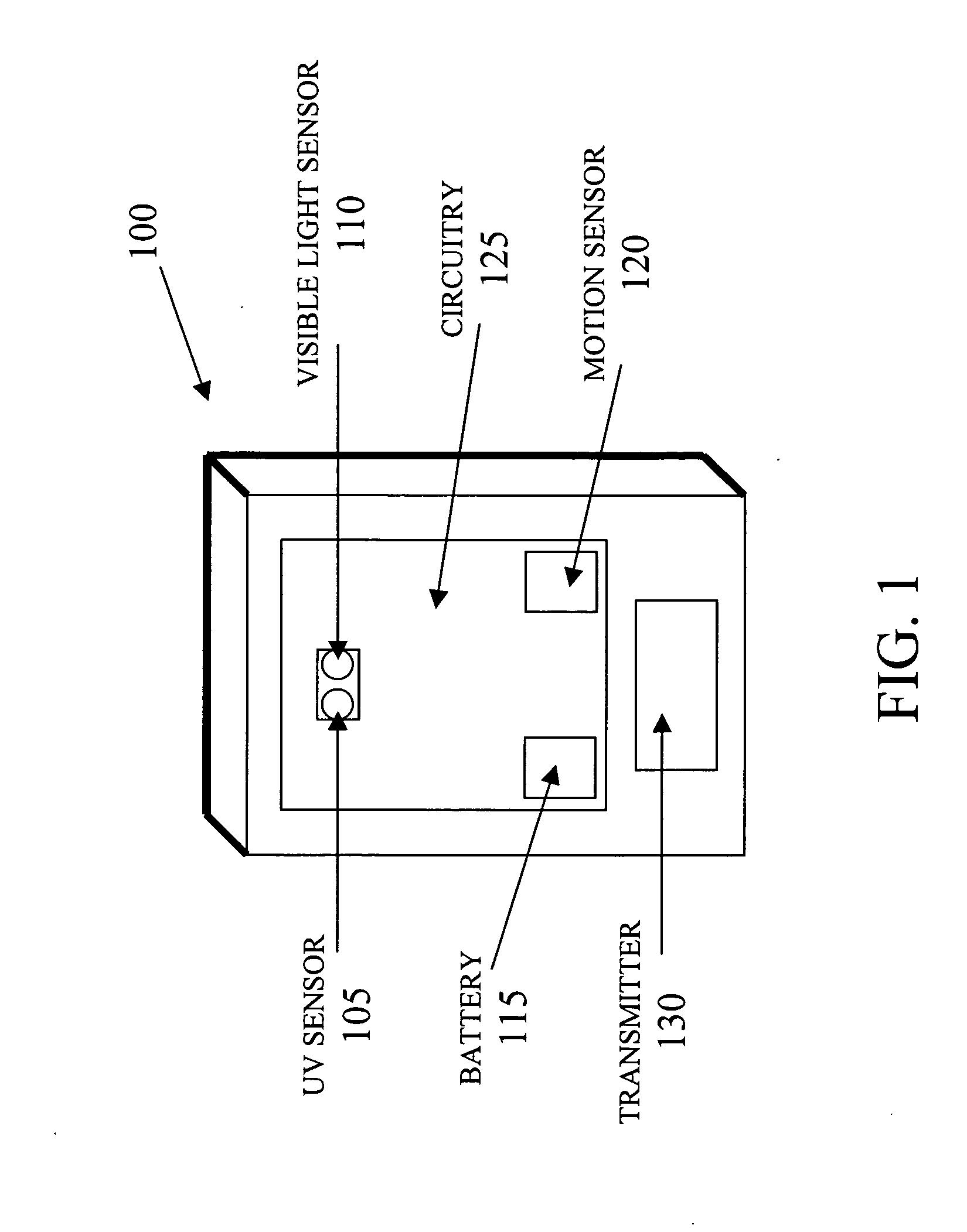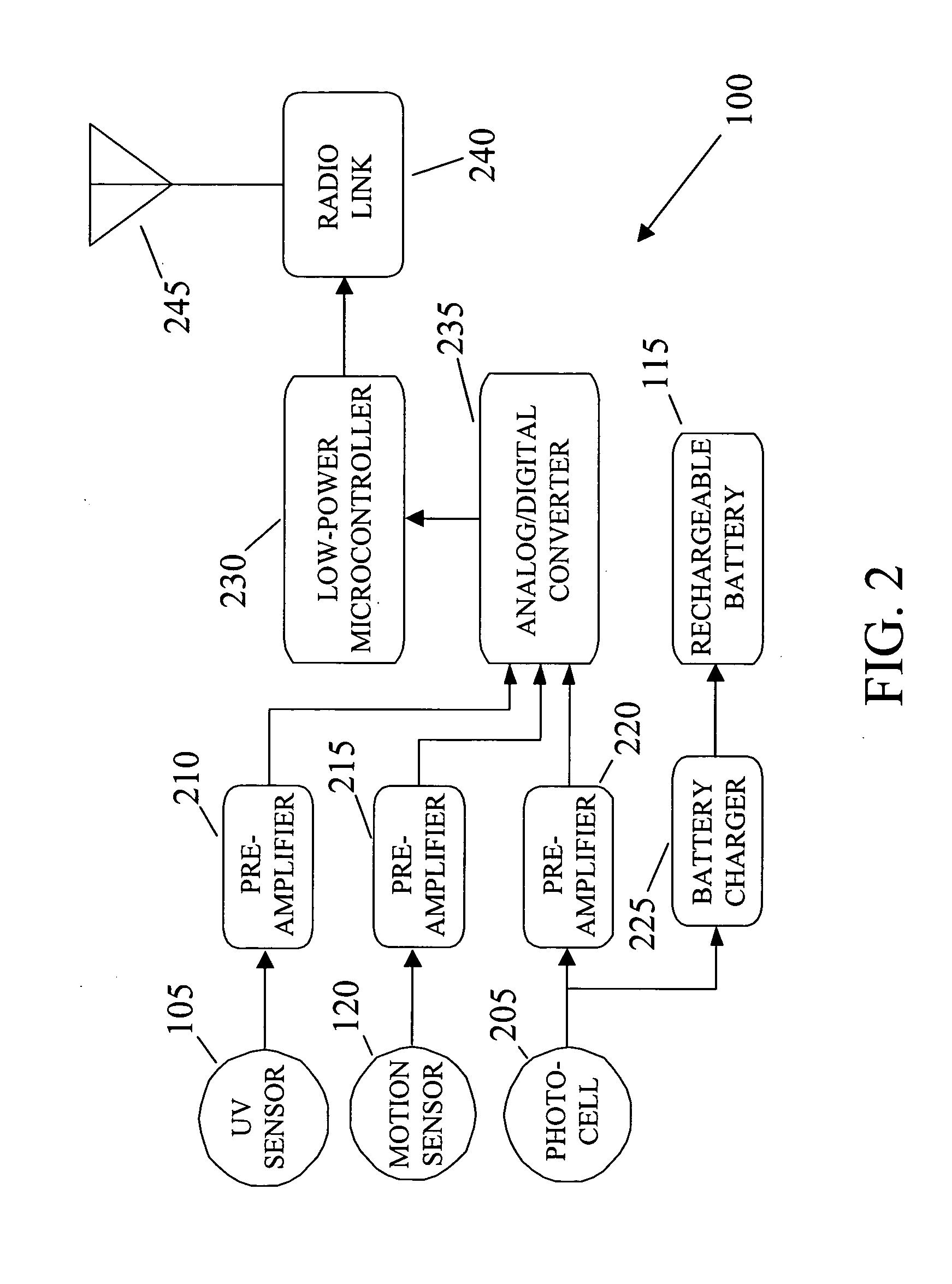Self-protected fire-sensing alarm apparatus and method
a fire-sensing alarm and self-protection technology, applied in fire alarms, fire alarm radiation actuation, instruments, etc., can solve the problems of affecting the performance of existing smoke and/or flame detection devices, and being vulnerable to deliberate attempts to negate the performance of such a detector
- Summary
- Abstract
- Description
- Claims
- Application Information
AI Technical Summary
Benefits of technology
Problems solved by technology
Method used
Image
Examples
Embodiment Construction
[0038] Exemplary embodiments of the present invention are directed to a self-protected fire-sensing alarm system and method. According to exemplary embodiments, a volume, room or other space can be automatically monitored for the presence of a flame, smoke or fire. While the presence of a flame, smoke or fire in the volume may be unintentional, an individual may intentionally create a flame, smoke or fire in the volume for the purposes of, for example, causing a hazard to property or persons, lighting a cigarette where smoking is not permitted, and the like. Thus, the individual may deliberately attempt to counter the fire-sensing system's ability to detect the fire to prevent the system from detecting the flame or fire. Measures to counter the fire-sensing system can include, for example, attempts to blind the system, attempts to damage the system, attempts to move or remove the system, and the like. The self-protected fire-sensing system according to exemplary embodiments incorpor...
PUM
 Login to View More
Login to View More Abstract
Description
Claims
Application Information
 Login to View More
Login to View More - R&D
- Intellectual Property
- Life Sciences
- Materials
- Tech Scout
- Unparalleled Data Quality
- Higher Quality Content
- 60% Fewer Hallucinations
Browse by: Latest US Patents, China's latest patents, Technical Efficacy Thesaurus, Application Domain, Technology Topic, Popular Technical Reports.
© 2025 PatSnap. All rights reserved.Legal|Privacy policy|Modern Slavery Act Transparency Statement|Sitemap|About US| Contact US: help@patsnap.com



